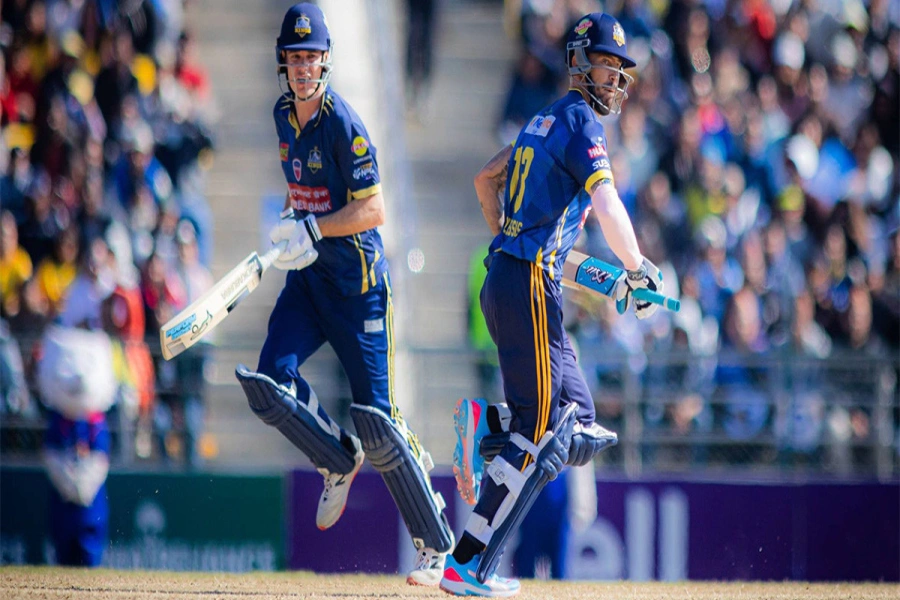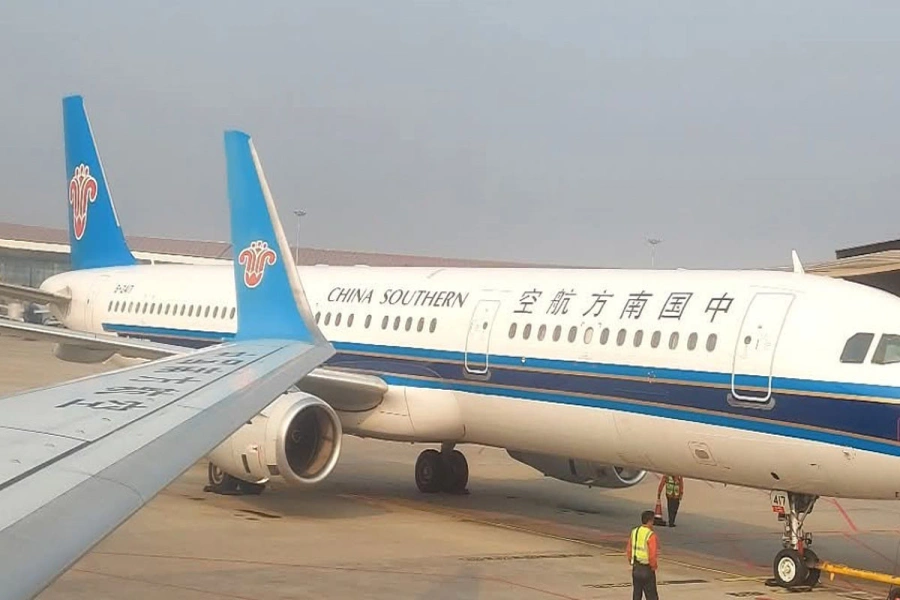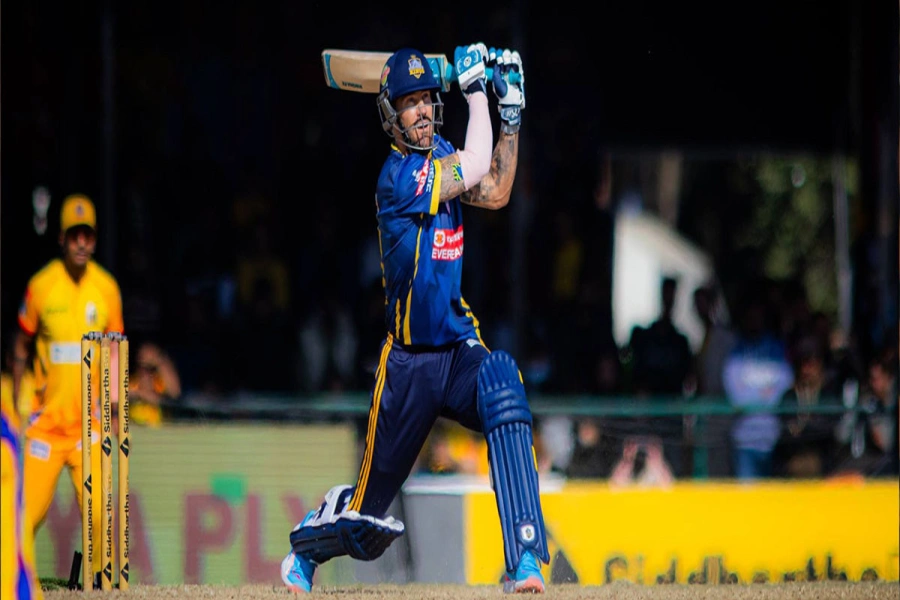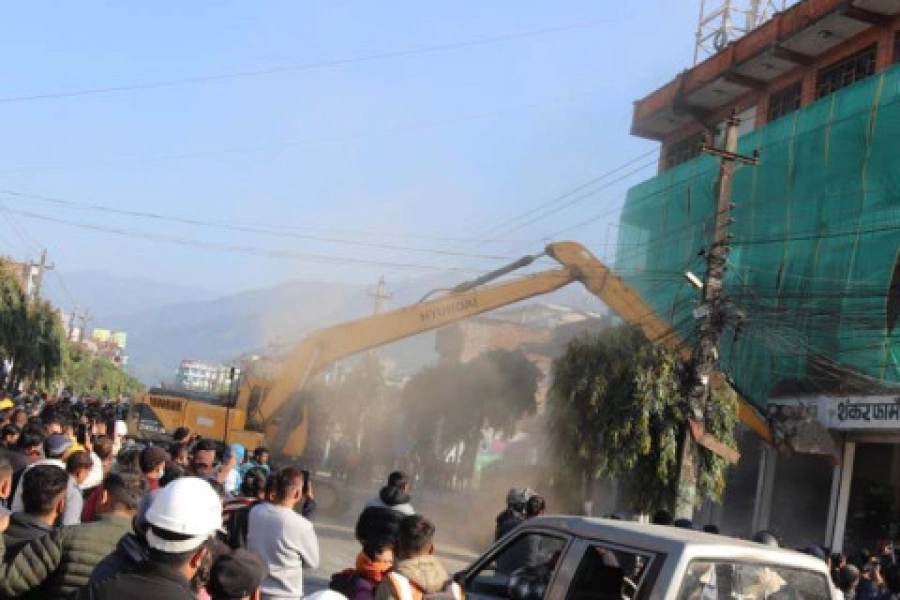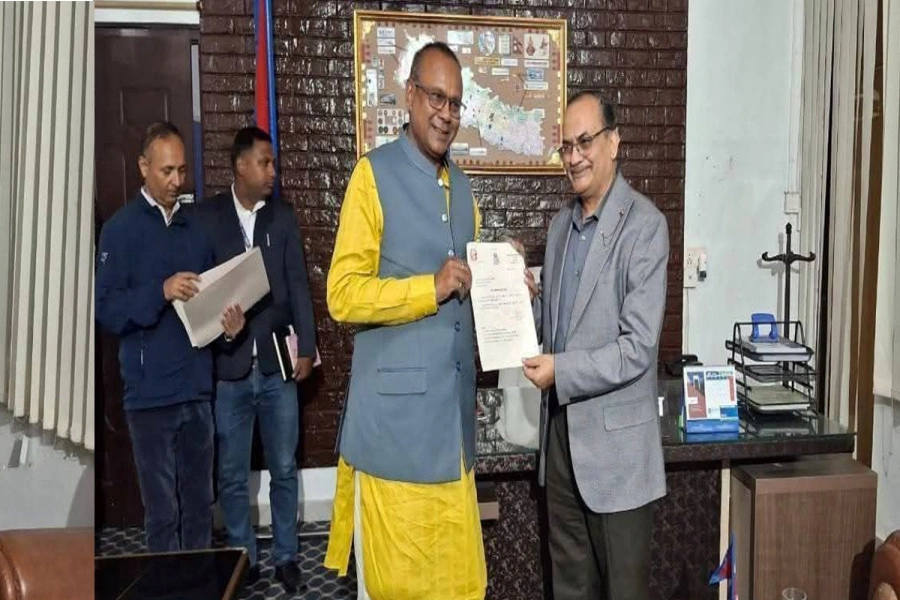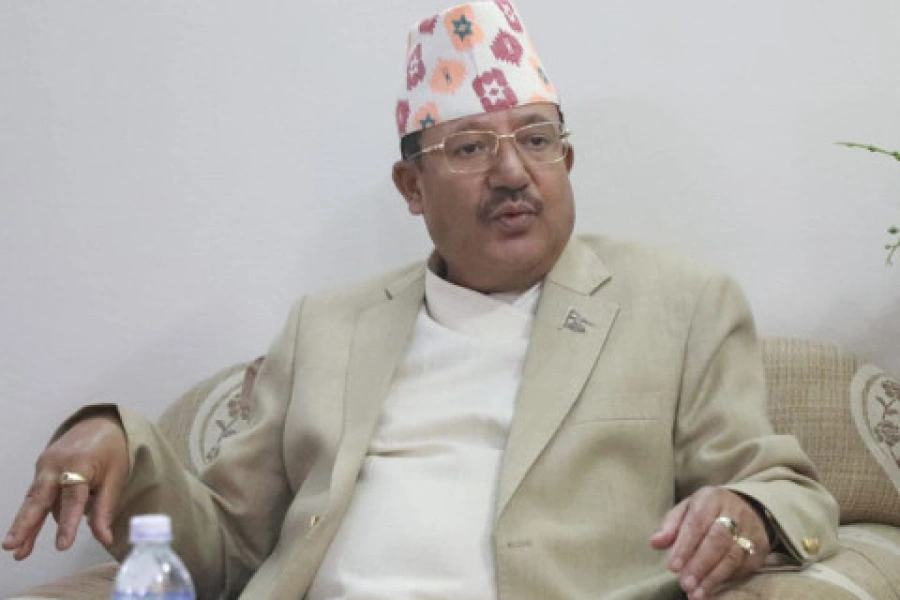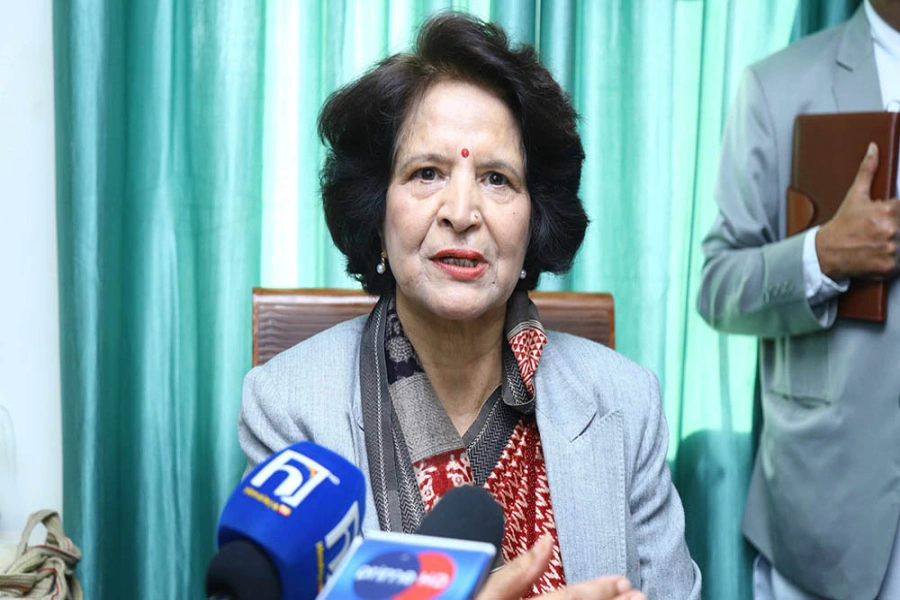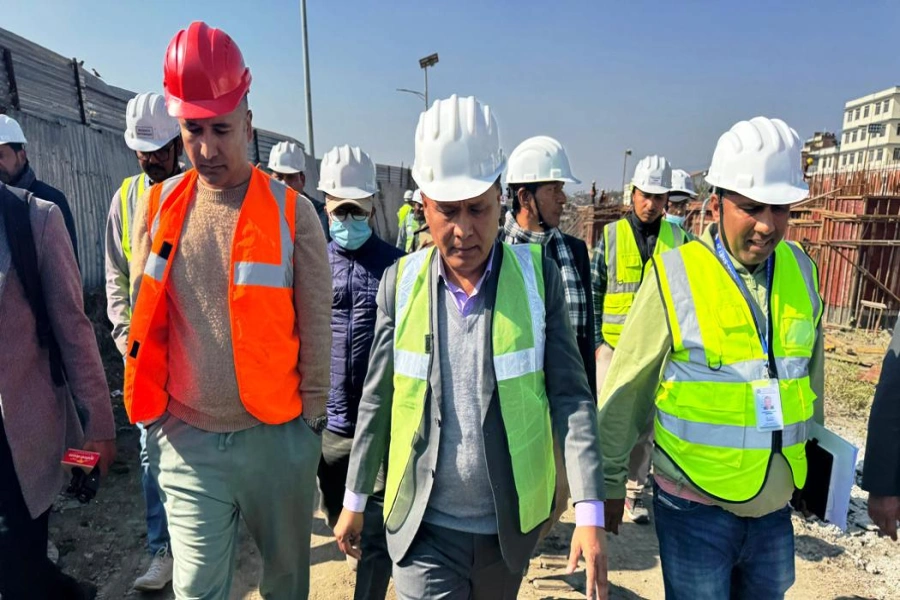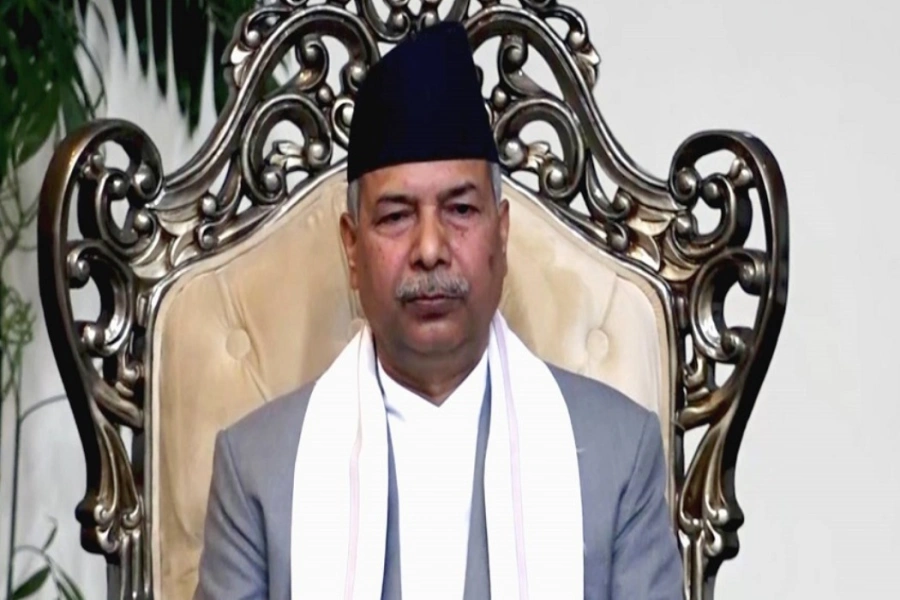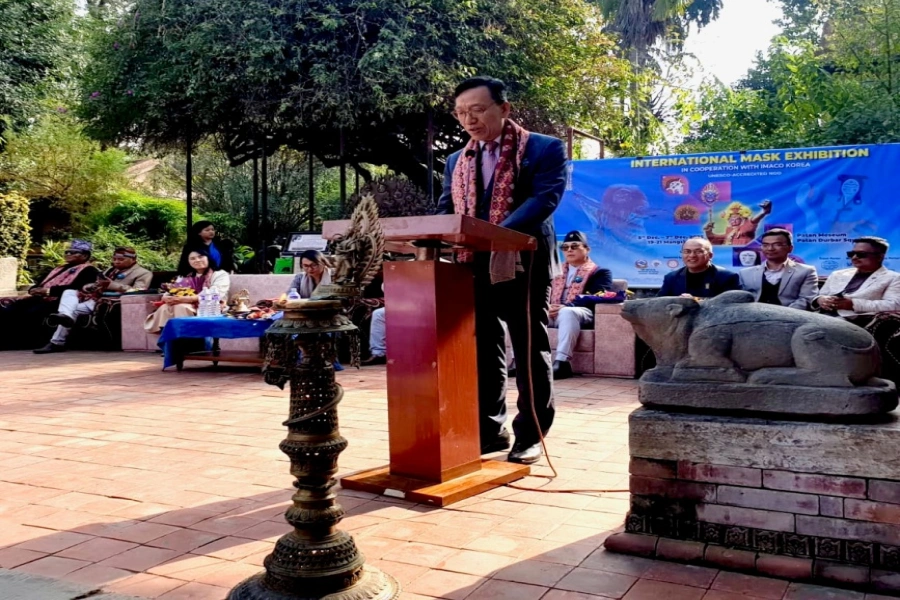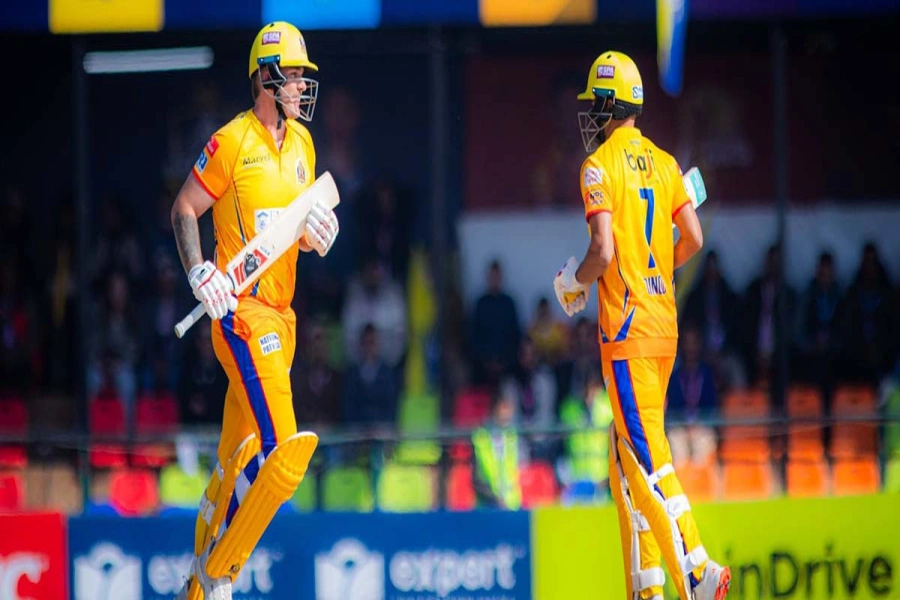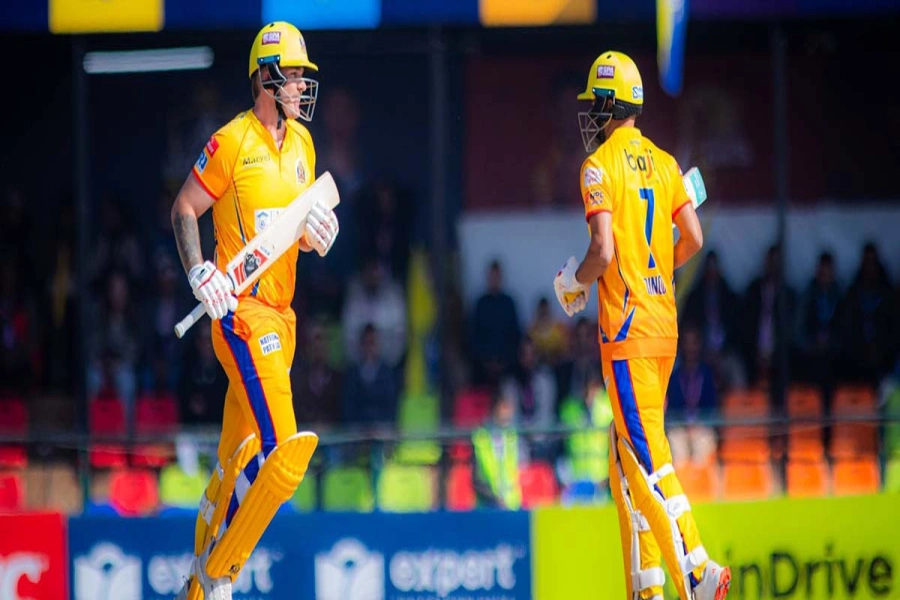ITAHARI, May 10: The Saptakoshi River recently altered its course to the southeast of the Koshi barrage, causing a boundary marker to ‘vanish’. Locals from Koshi Rural Municipality-8 in Sunsari claim that the true Nepal-India border should align with the river's current position, which is 300 meters south of the existing border post. However, they allege that pillar number 207/9 is positioned incorrectly, situated slightly north of its rightful place, encroaching upon Nepali territory.
Following the ‘disappearance’ of a border pillar allegedly washed away by the Saptakoshi River, locals reported erosion of land on the Nepal side. Ganesh Tamang, a resident of Koshi-8 living east of the Koshi barrage for 30 years, said, “The government should seriously study this again.” According to him, after the Koshi River altered its course in 2014 and swept away the boundary pillar, it was relocated northward, leading to the establishment of a new boundary.
The Nepal-India border is not a straight line anywhere but it is more twisted in Koshi Rural Municipality, Sunsari. Pillar number 206/6 stands merely 30 meters away from the East-West Highway at the border checkpoint in Koshi Rural Municipality-8, near Bhimnagar, India. A longtime resident of the area, 95 years old Jetha Lama, said, "The border between Nepal and India is very curved. I have been living here since my father's time." He said that there are generally no issues along the Nepal-India border, but there are suspicions that the last pillar (207/9) towards the west of Sunsari might have been tampered with or moved.
The Armed Police Force unit which guards Nepal’s international borders in Sunsari reported discrepancies regarding the area's border pillars. Although records indicate there are 23 border pillars in Sunsari, these pillars are not visible in the field. The missing structures include 19 auxiliary and four main pillars. According to the Armed Police Force records, 11 new border posts were constructed in Sunsari in the fiscal year 2074/75 BS, and four were rebuilt. Additionally, three new border pillars were erected in 2075/76 BS. Recently, the armed police refreshed the paint on 133 border posts in Sunsari. The district has a total of 290 boundary markers, including main, subsidiary, minor, and reference pillars.
High alert in Koshi River as water level exceeds danger level,...

In 1990, the 'Fixed Boundary Principle' was implemented by the Council of Ministers' decision, clarifying the border based on the time of the Sugauli Treaty. Damodar Dhakal, spokesperson for the Survey Department, said that after 2014, any disputes were considered resolved by acknowledging the historically agreed-upon border between the two countries.
"The map where the river flowed 200 years ago and the map of today definitely do not match. "There is a problem when the villagers have little technical knowledge," he told Republica over the telephone.
Disputes about the border between Nepal and India flare up from time to time. Somalal Mandal of Koshi-8 said that the Nepal government should take a serious approach to resolve this long-term problem.
He was moved by the incidents of Indian Sashastra Seema Bal (SSB) troopers entering Nepal and causing trouble, and said that such problems should be resolved forever.
In an incident on November 25, 2015, four people were injured when Indian SSB men fired indiscriminately at villagers in Kosi Rural Municipality-8 (formerly Haripur).
The villagers are still upset that the SSB men who entered the Nepali village and opened fire have not been punished. They say that even now, when they remember the incident, they get goosebumps.
Discrepancies between historical and current maps of the river's course are causing tensions along the Nepal-India border. "The map where the river flowed 200 years ago and today’s map definitely do not match," Dhakal told Republica over the telephone, highlighting challenges posed by the villagers' limited technical understanding.



